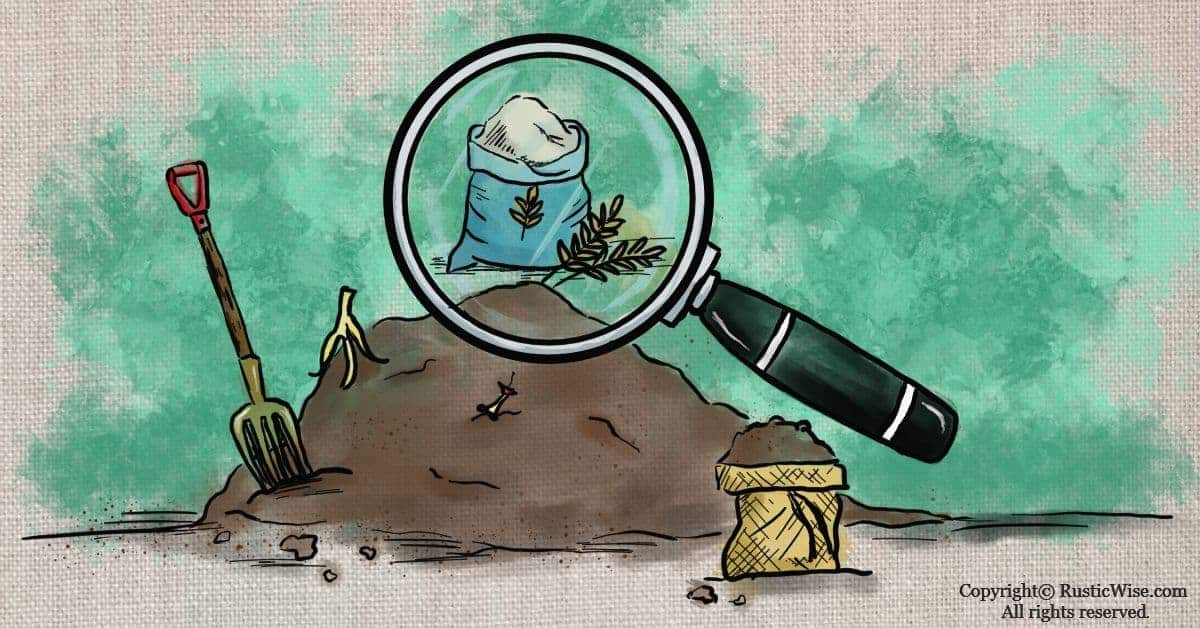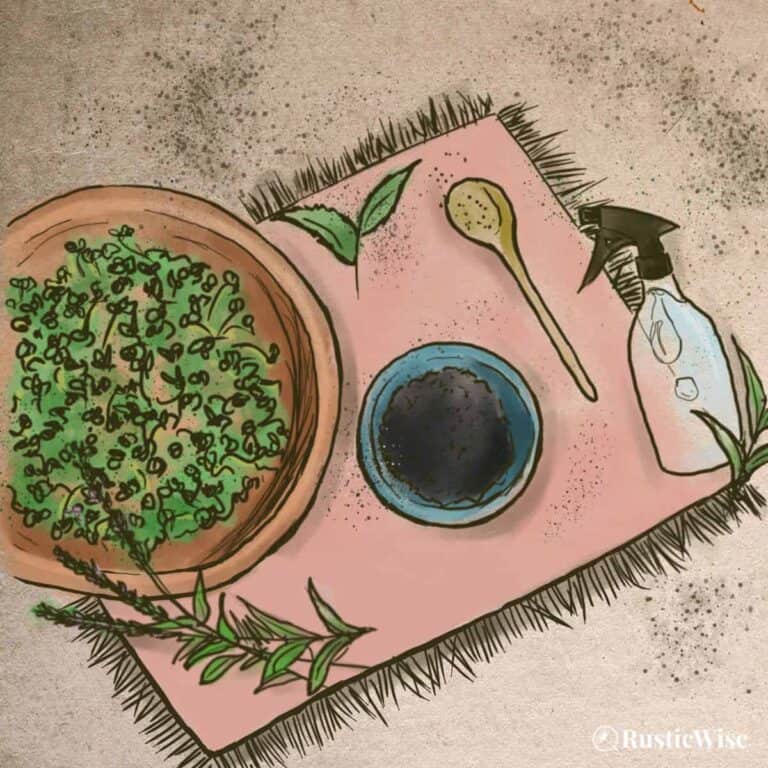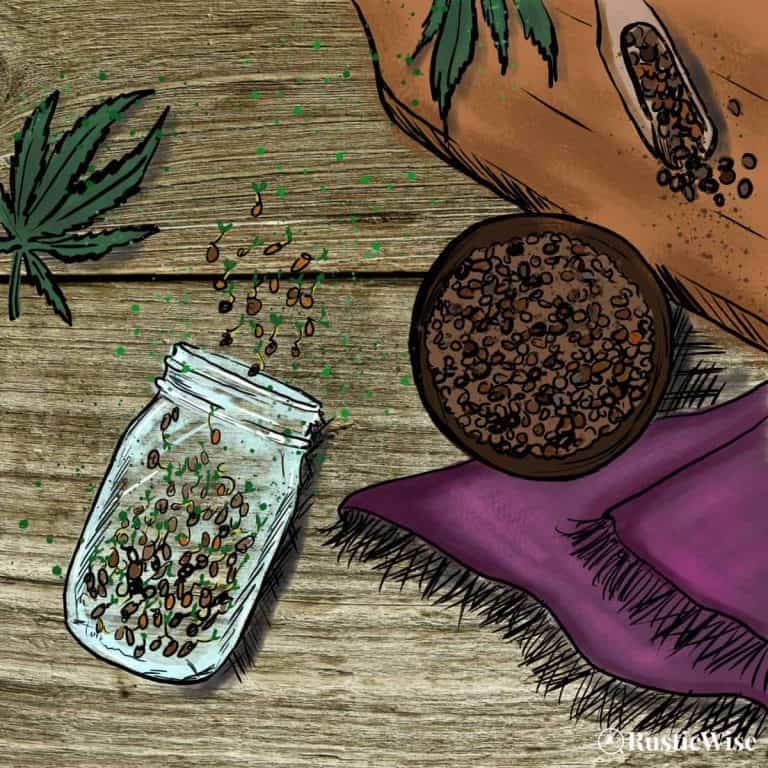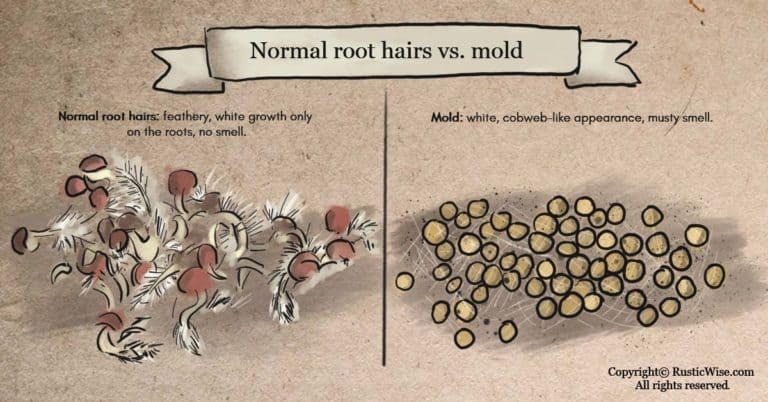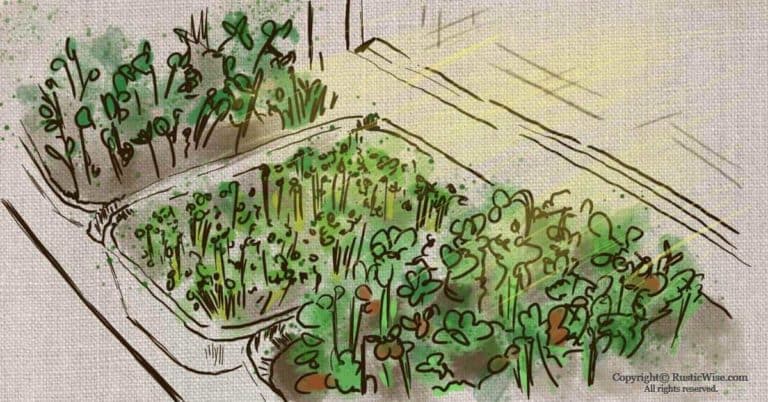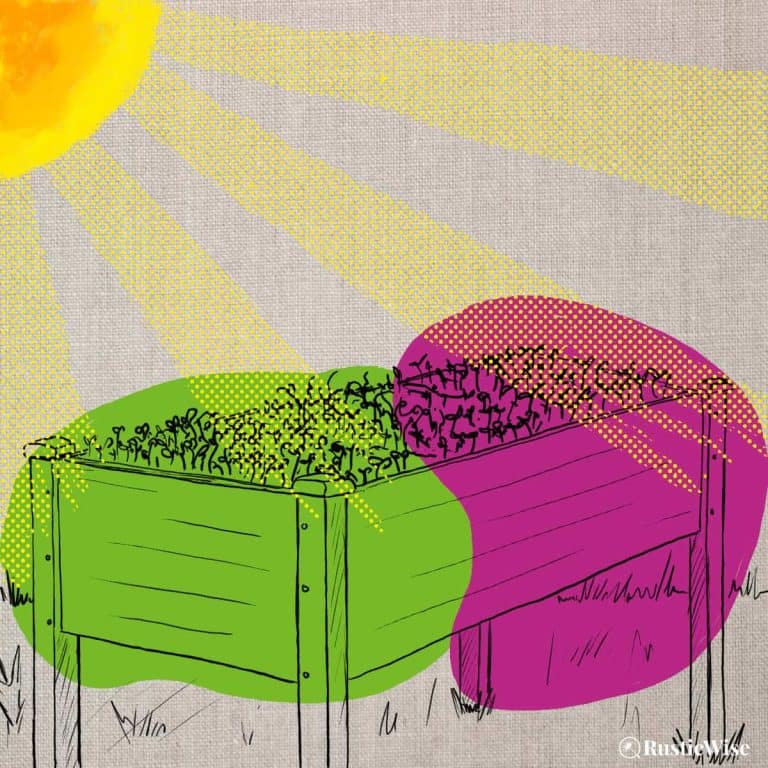Can You Compost Flour? Key Tips on Avoiding Clumps and Unwanted Pests
Can you compost flour? The quick answer is yes, you can (just add sparingly and only when dry). While most flour is made of wheat, you can also compost other types of flour, including almond, buckwheat, chickpea, coconut, and rice flour. Flour is made of plant-based matter which breaks down well in a compost pile.
What about weevil-invested or expired flour? Yes, these too can be composted (but you might want to freeze the flour first to kill the pests). Rich in carbon, flour is considered a “brown” component in composting terms; these materials typically take longer to break down compared to “green” materials.
So if you stocked up on more flour than you could use, don’t toss it out! Here are some tips on how to compost flour properly and how flour can help your compost heap. We’ve created this guide on how to compost flour in order to help you make better decisions about food waste and reduce your environmental impact.
What exactly is compost?
We realize that the term “compost” has different meanings to different people. Let’s make sure we’re on the same page.
When we say that flour is compostable, one group of people may interpret this to mean liberally sprinkling or dumping old flour directly into a flower bed or vegetable garden.
This is not what we mean when we say you can compost flour. Liberally dousing your garden with a large amount of flour may attract unwanted pests. (More on this down below!)
What we mean by composting flour is that you can add it to an existing compost pile as a composting ingredient.
What exactly is a compost pile? A compost pile is a mixture of food scraps and other organic matter that when mixed together with the right amount of oxygen and water, decomposes into rich natural soil conditioner.
The finished compost is called humus. It’s a lovely rich soil with a dark-brown color, and an earthy aroma (if it smells funky, it means it’s not quite ready yet!). It’s full of nutrients and makes a great supplement to your garden fertilizer.
Read more about composting piles and how to start your own.
Is flour good for a compost pile?
In order for a compost heap to work properly, it needs the right ingredients. Many types of organic waste are safe for the average backyard compost bin. While there are many different types of composting bins and methods, they all need a few common things:
- “Brown” materials: These components are rich in carbon. Flour falls under this category. Carbon provides microorganisms and other small insects in a compost pile with energy.¹ Brown matter breaks down at a slower rate. Other examples of brown materials include twigs, branches (and similar yard waste), unbleached paper products such as paper bags or paper towels, and dead leaves.
- “Green” materials: This encompasses organic material that is packed with nitrogen. Nitrogen provides microorganisms with the nutrition they need to reproduce, grow, and in turn, help break down organic materials.¹ Examples of green materials are kitchen scraps such as fruit and vegetable peelings, coffee grounds, tea bags, eggshells, and fresh trimmings from household plants.
- Water: Compost piles can dry out fairly quickly if there is not enough moisture present. The pile requires regular moisture to help with the composting process. Ensure your compost bin is moist, but not overly soggy.
- Oxygen: Aerobic conditions are required when composting. Not only does oxygen create the right environment for microorganisms, it also prevents the compost pile from smelling! You’ll need to turn the pile regularly to keep the materials well mixed, ensuring oxygen is available to all parts of the pile.
- Helpful microorganisms and other critters: And of course a compost wouldn’t work without the help of microorganisms, worms, and other small insects that help break down and decompose those kitchen scraps into fine soil.
The takeaway: Considered brown material, flour is a great compost material that provides a source of carbon needed to fuel and energize microorganisms and other insects in the compost pile.
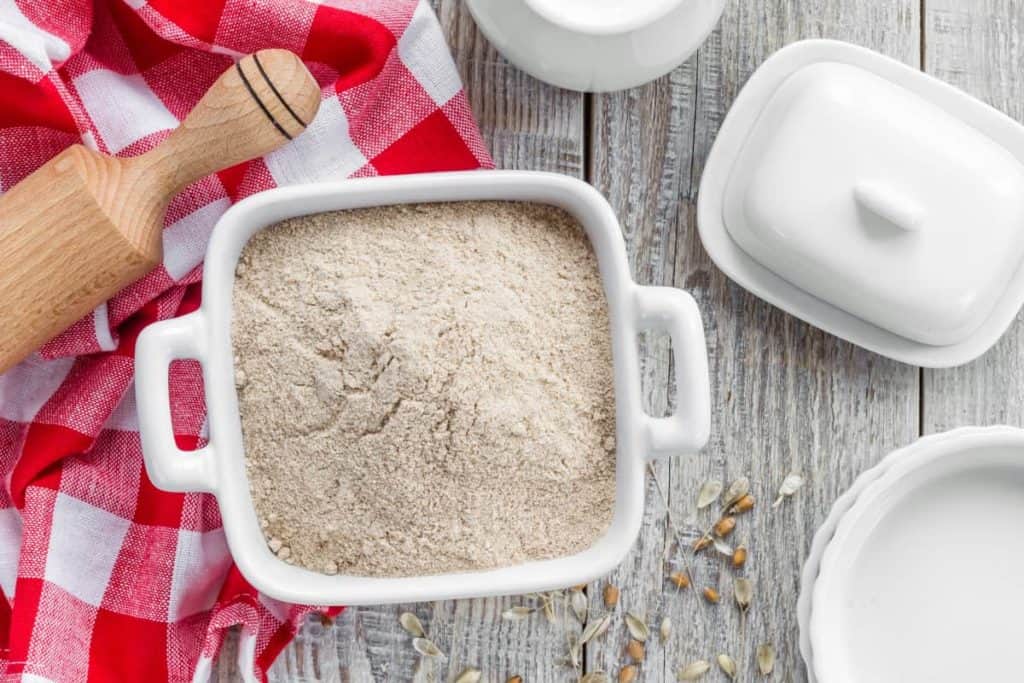
Tips on how to compost flour the right way
Composting flour can be done by adding it to the heap as a filler for extra carbon sources. Large amounts of flour may attract rodents or other unwanted pests, so apply flour sparingly.
- Go easy: Avoid dumping an entire bag of flour at once into the compost. Sprinkle a little bit at a time.
- Mix well: Grab a pitchfork or shovel and incorporate the flour into the compost pile to avoid lumps and clumps. Also, consider mixing the flour into the compost along with kitchen scraps (green components) which break down more quickly.
- Keep it dry: Ensure flour is dry before adding it to the compost. I’m sure you can imagine that adding wet flour will result in a lumpy, clumpy mess! Wet flour will also compact your compost pile stifling airflow needed to circulate around materials for efficient decomposition.
- Kill weevils: If you have weevil-infested flour, it’s a good idea to freeze that bag of flour first before adding to the compost. How long to freeze? Iowa State University says 3 days at 0 degrees Fahrenheit (-18 degrees Celsius) should be sufficient to kill all weevils at all stages of growth.²
Can you put expired flour in the garden?
Let’s say you don’t want to put old flour in a compost bin. Can you use expired flour directly in a backyard garden as a soil amendment? Yes, you can incorporate it into garden soil with some precautions.
The same rules apply when adding expired flour directly into soil as when adding to a compost heap.
First, it’s important to use sparingly as using too much at once can attract pests. Sprinkle a small amount of flour onto the soil and till it in.
Avoid adding pest-infested flour as this can harm your plants.
Never add wet flour as this can weigh down soil and cause clumping.
What if you have a large amount of expired flour? You can also dig a deep trench and add the old flour. Cover the flour with soil and let it sit for several weeks to allow it to decompose. Finally, till the soil and you should have nutrient-rich soil!
Can you compost the flour bag?
In most cases, yes. Most flour bags are made of unbleached paper which is safe to add to the compost pile. If your flour bag has a plastic bag or lining, or is bleached, save it for the trash bin. Bleached paper products will add chlorine to your compost which harms microorganisms and plants.
But don’t throw in the bag without first ripping or cutting it into small pieces (it will take a long time to decompose whole!). To help with the composting process, you can wet the bag pieces after you’ve cut them up.
Can you add old flour to a worm bin?
Yes, you can add flour to a worm farm, just use sparingly. Your compost worms may actually enjoy a bit of flour now and then. Flour is a source of protein, iron, and other trace minerals.³
Flour is actually useful in a worm farm (vermicompost) in other ways besides as a source of food. When preparing your worm bedding, add 1 cup of flour (old wheat flour, cornmeal or oat flour) to bedding to help boost the microbial properties before adding worms.³
How to store flour to extend shelf life
The reason you’re probably interested in composting flour is because you have a sack of stale flour on your hands, am I right? (No worries, we’re not judging!)
Flour is a pantry staple that becomes stale quickly if not properly stored. If you’ve been storing your flour in the pantry or a cupboard, you may have had the displeasure of discovering tiny brownish-blackish bugs. These are most likely granary weevils.
Female granary weevils bite a hole in a kernel of grain, lay an egg and seal it up. When the “baby” is ready, it bites its way out to emerge from the grain. This means there’s a good chance that your bag of flour you just brought home from the store may already have weevils (or eggs) in it! Check out our article on types of common pantry weevils.
If you’re planning on using your flour within a couple of weeks, it’s best to store in sealed, air-tight containers (glass, stainless steel, ceramic, or food-grade plastic). Keeping your opened flour in its original paper packaging makes it easy for pests to come in, and doesn’t protect it from air.
For long term storage, you can actually keep bags of flour in the freezer if you have the room for it.
If you happen to have found weevils, don’t worry—they’re not harmful to humans. Read up on ways to get rid of weevils naturally.
How to use flour to deter garden pests
If you’ve noticed some pests on your beloved garden plants, forget about the chemical pesticides. You can try this natural method of deterring grasshoppers, aphids, or other garden pests by sprinkling a bit of all-purpose flour.⁴
Note: Do NOT use self-rising flour as the salts may harm your plants and soil. Do not apply to a wet plant as the flour may clog the pores (stomata) on the leaves.
- Place a bit of all-purpose flour in a salt shaker or sifter.
- First, gently shake the plant to get the insects moving. Then quickly shake a bit of flour onto the insects and the plant. Leave for two days.
- Gently rinse off the plant with a garden hose.
What can I do with expired flour?
Besides composting old flour, here are a few other ways you can use up expired flour:
- Make baked dough ornaments
- Make play dough
- Make paper mache crafts
- Add to chicken feed
- Make dog biscuits
How to dispose of old flour
To dispose of old flour, there are a few options available. You already know about adding expired flour to a compost pile, adding it directly to soil, and using it as a pest deterrent. You can also add it to your green bin. If you have a municipal recycling program in your area, stale flour is safe to add as a food scrap.
The takeaway: can you compost flour?
So, can you compost flour? Yes! In fact, it breaks down well in a compost pile. However, there are some caveats to keep in mind when considering which types of flour may not be suitable for the process. For example, weevil-infested flours should first be frozen before being added to your backyard compost to kill pests and prevent any potential spread.
Flour is a brown material in composting terms; these materials typically take longer to break down compared to green material. If you want your compost pile to be more efficient and faster-acting, mix some green components like fruit or vegetable peels into the mix with the flour. The result will decompose at an accelerated rate with no problems!
Related questions
Can you compost bread?
In most instances, yes, you can compost bread. Ensure it’s plain, unbuttered bread (and of course it shouldn’t have peanut butter, jam, or any type of condiment on it). You’ll want to bury it in your backyard compost to avoid attracting unwanted pests. Read more about how to compost bread here.
Can you compost coconut oil?
No, it’s not recommended that you compost oil, lard, fat, or grease from the kitchen according to the United States Environmental Protection Agency (EPA).⁵ This is because these types of kitchen waste are prone to attracting pests and rodents, not to mention create a bad odor!
Can you compost sourdough starter?
Yes, you can add sourdough starter to your backyard compost heap, but do so sparingly. Sourdough starter is composed of flour, water, yeast, and other beneficial microbes which could be beneficial.
However, adding too much can bog down your pile and make it heavy and wet. Add sourdough starter in small quantities and mix it in well with brown materials such as dried leaves or newspaper.
👉 If you like this post, see our complete Composting Collection.
Would you like more timeless tips via email?
Fun tips to help you live an independent, self-sustaining lifestyle. Opt-out at any time.


References
- Foster, Clare (2014). Compost: How to make and use organic compost to transform your garden. Mitchell Beazley. ISBN 978-1-84533-895-4.
- Iowa State University Extension and Outreach, Rice Weevil and Granary Weevil, https://hortnews.extension.iastate.edu/rice-weevil-and-granary-weevil. Accessed November 2023.
- Garden Tea Company, Composting With Worms, https://www.gardenteacompany.com/composting-with-worms/. Accessed November 2023.
- Today’s Homeowner, How To Use Flour To Keep Pests Off Plants, https://todayshomeowner.com/video/keeping-pests-off-plants/. Accessed November 2023.
- United States Environmental Protection Agency (EPA), Composting At Home, https://www.epa.gov/recycle/composting-home. Accessed November 2023.

Author: Theresa Tesolin
Theresa is co-founder of RusticWise. She helps people unleash their inner DIY spirit by encouraging them to get dirty and make or grow something from scratch.

